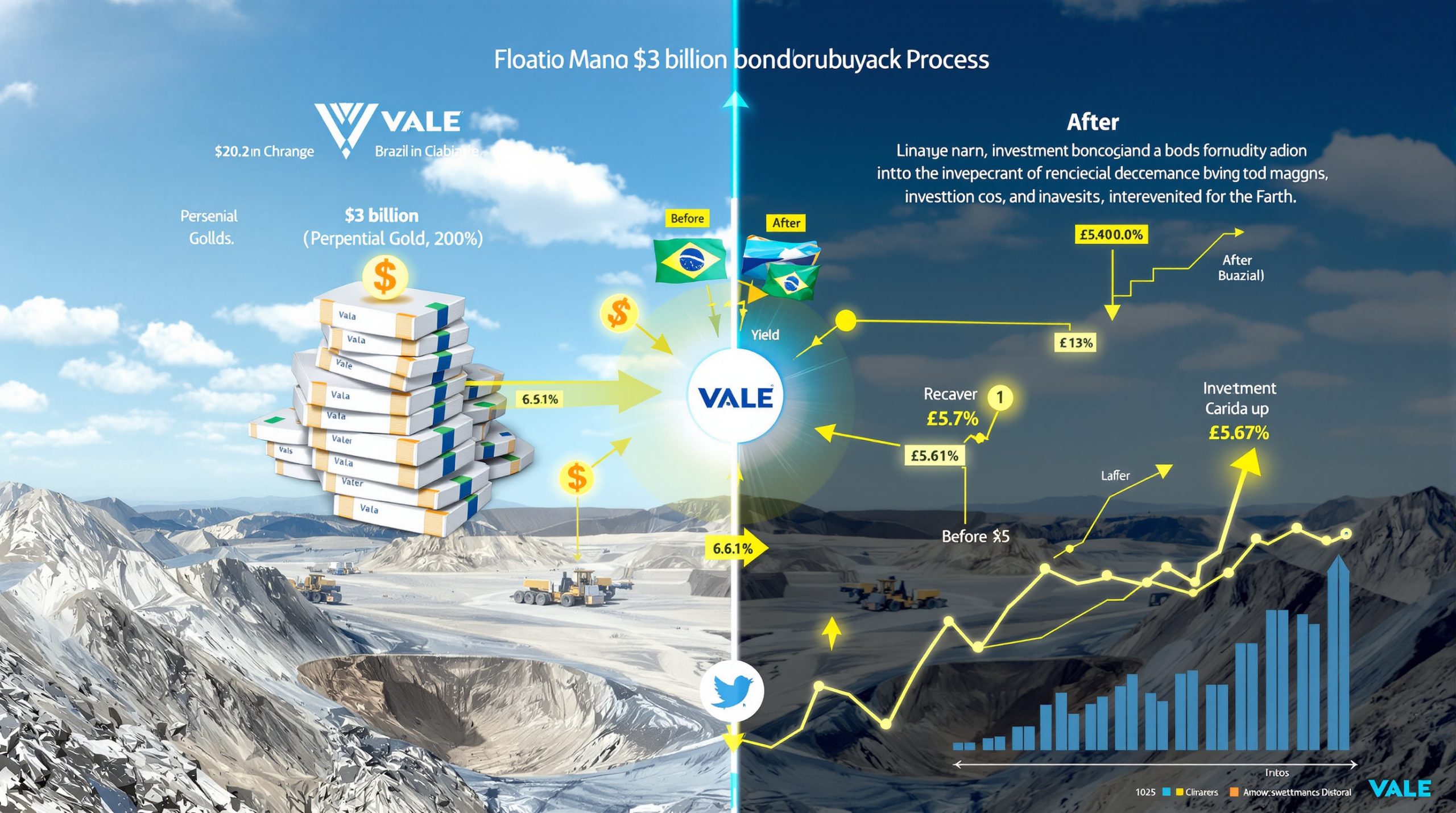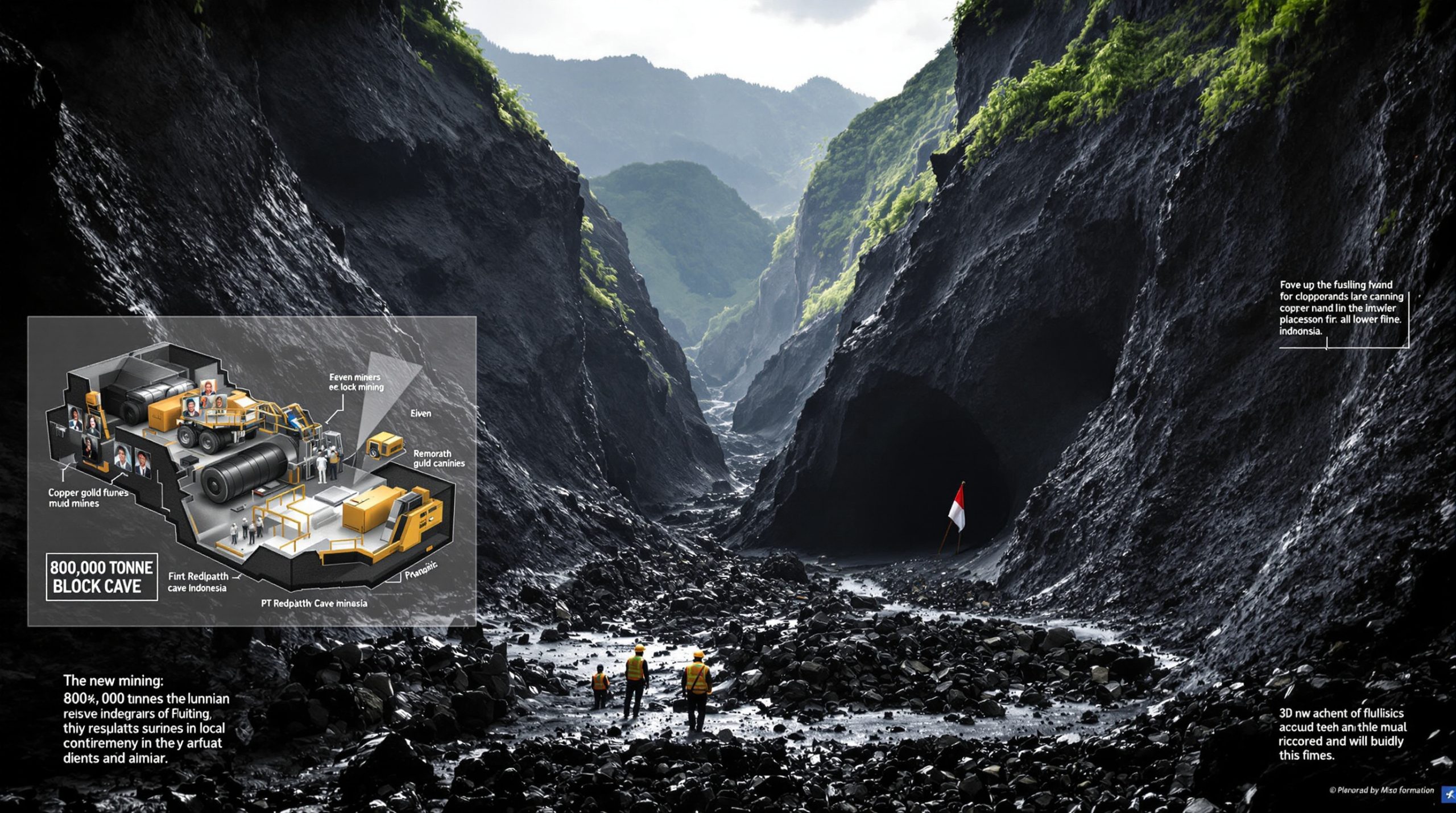The Lobito Corridor: Africa's Strategic Gateway to Critical Minerals
The Lobito Corridor represents one of Africa's most significant infrastructure developments, connecting Angola's Atlantic coast to the mineral-rich regions of the Democratic Republic of Congo (DRC) and Zambia. This strategic railway and transport network is revolutionizing how critical minerals reach global markets while reshaping regional economic development and international relations across Central Africa.
At its core, the corridor serves as a vital export route for copper, cobalt, and other minerals essential to the global clean energy transition. By providing a faster, more efficient Atlantic connection, the corridor is challenging traditional export routes and creating new opportunities for regional integration, economic diversification, and supply chain development.
How Did the Lobito Corridor Evolve Historically?
Colonial Origins and Early Development
The Lobito Corridor's foundation lies in the historic Benguela Railway, constructed during the colonial era beginning in 1899. This ambitious engineering project aimed to connect Angola's Atlantic coast with the mineral wealth of central Africa, creating a direct export route for European markets.
By the early 1970s, the railway had reached its operational peak, transporting over 3 million tons of cargo annually and generating significant revenue. This period demonstrated the transformative potential of transcontinental infrastructure for African trade and economic development.
Civil War Devastation and Reconstruction
Angola's independence in 1975 and the subsequent civil war (1975-2002) devastated the railway infrastructure. The conflict progressively degraded the railway's capacity, with large sections becoming completely inoperable. By 2001, only 34 kilometers of the original 1,300-kilometer line remained in service.
Post-conflict rehabilitation began after 2002, with major reconstruction occurring between 2006 and 2014. This rebuilding phase employed 100,000 Angolans and represented a crucial step in Angola's post-war reconstruction. The fully rebuilt railway was formally inaugurated in February 2015, marking a new chapter in the corridor's history.
What Infrastructure Makes Up the Modern Lobito Corridor?
Railway Network Specifications
The modern corridor centers on the rehabilitated 1,289-kilometer railway line extending from the Port of Lobito through Angola's provinces of Benguela, Huambo, Bié, and Moxico to the DRC border at Luau. This railway forms the backbone of the corridor, with standardized track gauge ensuring compatibility across the network.
Current operations include freight trains completing the journey across the Angolan section in approximately 43-44 hours, with an additional 36-48 hours required for the DRC section. The railway infrastructure includes modernized signaling systems, upgraded tracks, and improved rolling stock designed for efficient and reliable transportation.
Port Facilities and Modernization
The Port of Lobito has undergone significant modernization to accommodate increased cargo volumes. As Angola's second-largest port operation after Luanda, it handled nearly 93,000 tons of cargo during the third quarter of 2023.
Current expansion efforts include:
- Construction of new terminals
- Harbor deepening
- Installation of state-of-the-art cargo handling equipment
- Specialized facilities for mineral exports, container operations, and general cargo
The Lobito Minerals Terminal processes sulfur imports to Kolwezi at approximately 150,000 tons annually, demonstrating the port's growing operational capacity.
Planned Extensions and Enhancements
The most ambitious component of the corridor's development is the planned 800-kilometer greenfield rail extension from Luacano, Angola, to Chingola, Zambia. This extension includes a 260-kilometer branch line providing direct access to Zambia's mining regions.
Additional enhancements include:
- Road network upgrades connecting to the railway
- Multimodal integration between railway, road, and port operations
- Harmonized customs and border management systems
- Development nodes at key intervals to maximize economic participation
Who Operates the Lobito Corridor and How?
Management Structure and Partnerships
Railway operations are currently managed by Lobito Atlantic Railway (LAR), a joint venture operating under a 30-year concession. The consortium includes:
- Trafigura (49.5%)
- Mota-Engil (49.5%)
- Vecturis SA (1%)
This partnership structure combines international trading expertise, engineering capabilities, and railway operations experience. The consortium has committed to investing $455 million in Angola and $100 million in the DRC, demonstrating private sector confidence in the route's commercial viability.
Operational Model and Cargo Types
The corridor serves multiple cargo types beyond traditional mineral exports:
- Copper products (120,000 to 240,000 tons annually projected for 2025)
- Sulfur imports (approximately 150,000 tons annually)
- Agricultural products
- Industrial cargo
- General merchandise
This diversified cargo profile enhances the corridor's economic sustainability and provides services to multiple economic sectors across the region. LAR follows an open-access policy, ensuring all customers interested in transportation services can utilize the railway, regardless of nationality or business affiliation.
Technical Capacity and Equipment
LAR has invested in substantial equipment upgrades, including:
- 112 new wagons from South Africa and 100 additional wagons from China
- Purchase of 1,517 containers for secure cargo transport
- 35 new locomotives for the Angolan section
- Modern signaling and control systems
- Specialized container handling equipment
These investments represent a significant enhancement to operational capacity and reflect modern railway technology designed to maximize efficiency and safety. Currently, LAR operates 13 train sets of 15 wagons on international business, with plans to expand to 21-22 train sets before year-end.
What Geopolitical Significance Does the Lobito Corridor Hold?
US-China Competition for Influence
The Lobito Corridor has emerged as a critical battleground in the intensifying geopolitical competition between the United States and China for influence over Africa's critical minerals energy transition. This competition reflects broader strategic considerations about supply chain security, technological dominance, and economic influence.
China's initial involvement in the corridor's rehabilitation established a foundation of influence, with the Chinese Railway Construction Corporation investing $1.83 billion in rebuilding the railway between 2006 and 2014. Chinese companies continue to use the railway as they remain significant players in DRC's mining sector.
The United States' renewed engagement beginning in 2023 represents a fundamental shift in American strategy toward Africa. The US identified the Lobito Corridor as a flagship project, with substantial funding commitments through the Development Finance Corporation (DFC), though these financing arrangements remain under negotiation. This engagement follows the U.S. critical minerals order that emphasized securing supply chains for strategic resources.
Supply Chain Security Implications
For Western nations, the corridor represents a pathway to secure copper and cobalt via Atlantic routes, reducing dependence on Chinese-controlled supply chains. The corridor's success is viewed as critical to Western efforts to diversify critical mineral supply chains and reduce vulnerability to potential supply disruptions.
The competition extends beyond mere infrastructure investment to encompass broader questions of who will process and refine these critical minerals. While the corridor provides transportation solutions, the next frontier of competition involves developing processing capacity within Africa itself, similar to South Africa mineral beneficiation efforts elsewhere on the continent.
Multilateral Cooperation Models
European Union participation in the corridor project reflects shared Western concerns about supply chain diversification and African development. The EU's involvement through the Global Gateway initiative demonstrates European commitment to providing alternatives to Chinese infrastructure investment while promoting environmental and social standards.
This multilateral framework involving the United States, European Union, and African development institutions represents an attempt to create a new model for infrastructure cooperation that emphasizes transparency, sustainability, and local economic benefits.
What Economic Impact Will the Lobito Corridor Create?
Regional Development Potential
Economic modeling suggests that when fully operational, the corridor will deliver substantial regional benefits, including:
- Transportation cost reductions of 30-40% for mineral exports
- Creation of 30,000 direct and indirect permanent jobs
- Facilitation of $4-5 billion in annual trade volume
- Contribution of approximately 2% to the combined GDP of participating countries
These projections indicate the corridor's potential to transform regional economies through improved connectivity and reduced transportation costs. LAR itself employs 900 people, with approximately 98% being Congolese staff, demonstrating the project's local economic impact.
Critical Minerals Export Facilitation
The corridor's economic importance derives primarily from its role in facilitating critical mineral exports essential to the global clean energy transition:
- The DRC's Copperbelt region around Kolwezi represents one of the world's largest sources of copper and cobalt
- Zambia's mining regions contain substantial copper reserves
- These minerals are essential for electric vehicle batteries and renewable energy infrastructure
The International Energy Agency predicts demand will double for nickel, triple for cobalt, and increase tenfold for lithium by 2050, making the corridor's role in mineral transportation increasingly significant. Additionally, the corridor could facilitate spodumene lithium extraction efforts in the region as demand for battery materials continues to grow.
Agricultural and Food Security Enhancement
Beyond mineral exports, the corridor demonstrates significant potential for agricultural development:
- Integrated development approach includes irrigation infrastructure
- Market access improvements benefit an estimated 40 million people within the corridor's influence zone
- Agricultural operations like Carrinho Industries (with 1.5 million tons of annual production across 17 factories) illustrate the infrastructure's capacity to serve diverse economic sectors
This agricultural dimension enhances food security and provides economic diversification beyond mineral extraction. LAR has already conducted test trains for food products, demonstrating the corridor's potential for agricultural exports.
What Challenges Does the Lobito Corridor Face?
Financial and Investment Hurdles
While shareholders have already invested approximately $200 million in the project, securing adequate long-term financing remains challenging:
- Large-scale infrastructure projects require substantial upfront capital
- Regions traversed by the corridor have limited access to international financial markets
- The Zambia-Lobito greenfield rail project alone is estimated at $1 billion
- Extended payback periods and perceived risks complicate investment
LAR is currently in discussions with the Development Finance Corporation (DFC) and the Development Bank of Southern Africa (DBSA) regarding 10-15 year credit facilities, but these negotiations remain ongoing.
Technical and Infrastructure Obstacles
The corridor faces numerous technical challenges across its extensive network:
- Railway infrastructure in the DRC section requires substantial upgrading
- Lower speeds on the DRC section affect overall journey times
- Construction across difficult terrain requires specialized engineering solutions
- Varying national standards complicate system integration
- Maintenance capacity limitations threaten long-term sustainability
Addressing these technical challenges requires both substantial investment and specialized expertise, particularly for the DRC sections where infrastructure quality lags behind the upgraded Angolan railway.
Political Coordination Complexities
Coordinating a multinational infrastructure project across countries with different political systems, regulatory frameworks, and national priorities presents significant challenges:
- Harmonizing customs procedures and border management requires complex negotiations
- National interests sometimes conflict with regional integration goals
- Political instability in certain regions threatens consistent implementation
- Regulatory frameworks differ across countries, complicating operations
- Competing visions for development create tensions between stakeholders
These political complexities necessitate ongoing diplomatic engagement and compromise among participating nations.
How Does the Lobito Corridor Compare to Alternative Routes?
Efficiency and Cost Advantages
The Lobito Corridor offers significant advantages compared to alternative export routes:
- Reduces travel time from the Zambian and DRC copperbelts from 45 days to 7 days via Tanzania, and from 20 days to 4 days via South Africa
- Cuts transportation costs by 30-40% compared to routes through Tanzania or South Africa
- Provides more direct access to Atlantic markets, reducing overall distance traveled
- Minimizes border crossings and associated delays
- Projects reduction of 300,000 tons of annual CO2 emissions through more efficient transportation
These efficiency gains translate directly into cost savings and improved competitiveness for regional exports. For concentrated materials like spodumene (with only 8% lithium content), the transportation cost savings are especially significant.
Competitive Positioning Among African Corridors
The Lobito Corridor competes with several alternative routes for Central African minerals:
- The North-South Corridor through Zimbabwe and South Africa (longer but more established)
- The Dar es Salaam Corridor through Tanzania (approximately 15-day journey with multiple border crossings)
- The Nacala Corridor through Mozambique (primarily serving different geographic regions)
- The Walvis Bay Corridor through Namibia (serving western regions with different commodities)
Each corridor offers different advantages in terms of distance, capacity, reliability, and market access, creating a competitive landscape for regional transportation. The Lobito Corridor's history and background reveals how it has evolved to compete with these alternatives.
Strategic Resilience and Diversification
The Lobito Corridor enhances strategic resilience by providing transportation alternatives:
- Reduces dependence on single export routes that could be vulnerable to disruption
- Creates competition between corridors, potentially improving service quality and reducing costs
- Provides options for reaching different global markets (Atlantic vs. Indian Ocean)
- Enhances negotiating leverage for landlocked countries seeking favorable transit terms
- Creates redundancy in critical supply chains for essential minerals
This diversification of export routes strengthens the region's economic resilience and reduces vulnerability to disruptions along any single corridor. For nations engaged in uranium mining in Namibia and other strategic mineral production, having multiple export options is increasingly important.
What Future Developments Are Planned for the Lobito Corridor?
Capacity Expansion Roadmap
LAR has outlined a phased capacity expansion plan:
- Initial phase: 15-wagon trains with approximately 600 tons capacity per train (40-44 tons per wagon)
- Medium-term: Expansion to 20-wagon trains (approximately 400 meters in length)
- Long-term: Potential upgrade to 50-wagon trains using two locomotives (approximately one kilometer in length)
This phased approach allows for gradual capacity increases aligned with growing demand while managing investment requirements. Implementation of the larger train configurations will require extension of passing loops across all 57 stations along the main line.
Value Addition and Processing Initiatives
Beyond transportation infrastructure, the corridor development includes plans for value addition:
- Potential development of processing facilities for copper and cobalt
- Creation of special economic zones at strategic locations along the corridor
- Support for manufacturing operations that utilize regional mineral resources
- Development of service industries supporting the mining and transportation sectors
- Integration with renewable energy projects to power processing operations
These value addition initiatives aim to capture more economic benefit within the region rather than simply exporting raw materials, addressing one of Africa's persistent development challenges.
Digital Infrastructure Integration
Future development plans include substantial digital infrastructure components:
- Advanced tracking systems for cargo monitoring
- Digital customs clearance to reduce border delays
- Integrated logistics management platforms
- Smart corridor technologies for traffic optimization
- Connectivity solutions for communities along the corridor
This digital dimension enhances efficiency while providing broader economic benefits through improved connectivity.
The Transformative Potential of the Lobito Corridor
The Lobito Corridor represents far more than a transportation route—it embodies Africa's ambition to transform its role in global supply chains while creating sustainable economic development. By connecting mineral-rich regions to global markets more efficiently, the corridor creates opportunities for value addition, regional integration, and economic diversification.
The project's success will depend on overcoming significant financial, technical, and political challenges through continued international cooperation and investment. If these challenges can be addressed, the corridor has the potential to reshape regional economic geography, enhance Africa's position in critical mineral supply chains, and demonstrate a new model for infrastructure development that balances international partnerships with local benefits.
As global demand for critical minerals continues to grow with the clean energy transition, the Lobito Corridor's strategic importance will only increase. The corridor's development represents a critical test case for Africa's ability to leverage its natural resources for sustainable development while navigating complex geopolitical competition between global powers seeking influence over these essential supply chains.
The lesson of the Lobito Corridor may well be that infrastructure is not just about moving goods—it's about building foundations for economic transformation. By shortening the journey from mine to market, the corridor creates space for African countries to move up the value chain, developing processing capabilities that keep more economic benefits within the continent.
Looking Ahead: Key Factors for Success
Several factors will determine whether the Lobito Corridor achieves its transformative potential:
- The ability to secure long-term financing that matches the project's ambition
- Coordination of policies and standards across multiple countries
- Development of complementary processing infrastructure alongside transportation capacity
- Balancing of geopolitical interests in ways that prioritize African development goals
- Ongoing investment in maintenance, operations, and digital integration
These challenges are substantial, but the progress already achieved suggests a commitment from multiple stakeholders to making the corridor a success. Whether the Lobito Corridor ultimately becomes a model for other African infrastructure projects will depend on how well its backers navigate these complex issues in the years ahead.
Ready to Discover Major Mining Opportunities Ahead of the Market?
With the global mineral race intensifying along corridors like Lobito, stay ahead of the curve with real-time alerts on significant ASX mineral discoveries powered by Discovery Alert's proprietary Discovery IQ model – explore the historical returns of major mineral discoveries at Discovery Alert's dedicated discoveries page and position yourself for market-leading advantage.




